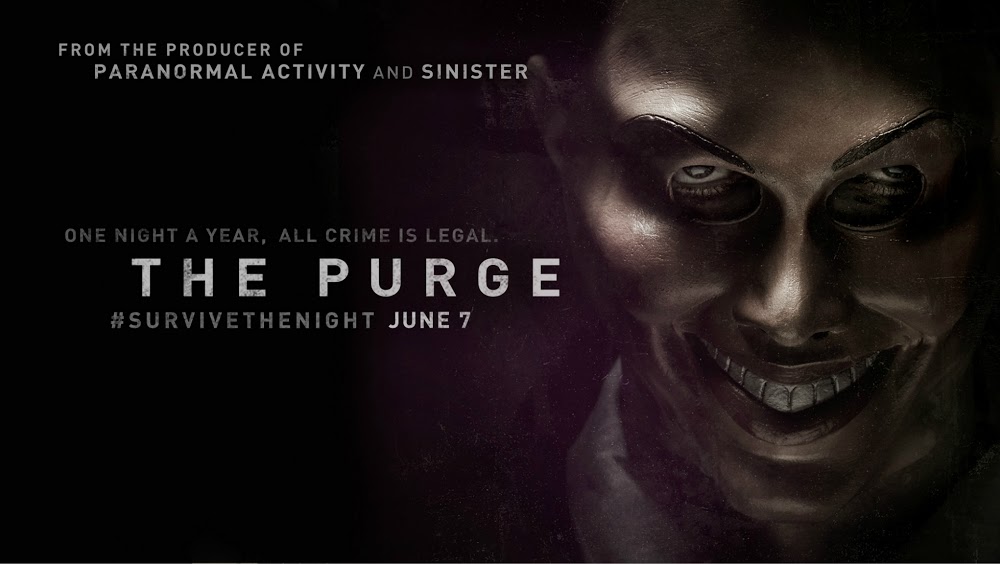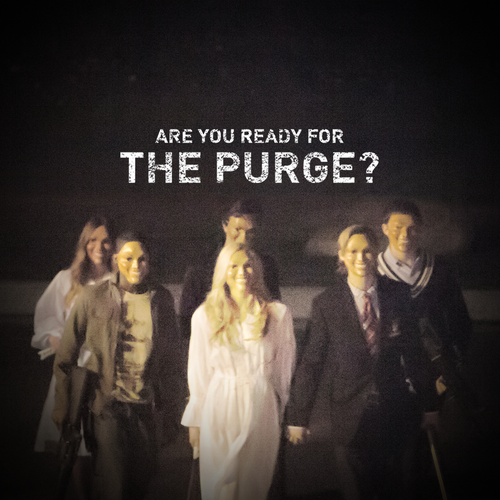 I finally had an opportunity to watch The Purge over the weekend. I heard good things about the film when it appeared in theaters, especially its phenomenal box office success, earning $87 million globally with a $3 million production budget. Part of the film’s success may have come from its political and social commentary. This was largely perceived as progressive in orientation, and offering a critique of the Tea Party, and the NRA in particular.
I finally had an opportunity to watch The Purge over the weekend. I heard good things about the film when it appeared in theaters, especially its phenomenal box office success, earning $87 million globally with a $3 million production budget. Part of the film’s success may have come from its political and social commentary. This was largely perceived as progressive in orientation, and offering a critique of the Tea Party, and the NRA in particular.
But after watching the film, and recently re-reading the progressive commentary on it, I came away with a different reading. To be sure, some critique of the Right is present, but in my view, if we step back The Purge incorporates critical views that transcend American political party distinctions. Specifically, the film provides strong commentary on America’s sacralization of the federal government, civil religion, penchant for violence, and possession envy.
Sacralization of the federal government. At several points during the film we hear mention of the New Founding Fathers, and their recreation of the country that incorporates an annual time of state-sanctioned violence without legal repercussions. This is understood by most in the country as a great service that demonstrates the wisdom of the Fathers who are spoken of in reverent terms. Although the time of “The Purge” involves the grossest of immorality, the nation’s citizenry holds the federal government in high esteem, so much so that it approaches religious veneration. This serves as a critique of the inappropriate elevation of the federal government, which manifests itself on both the Right and Left depending upon which political party maintains dominance and control. This leads to the second area of commentary in the film.
Civil religion. The act of “The Purge,” although an event authorized by the secular state, functions as a religious ritual, at least for some. At the conclusion of the film a small group breaks into their neighbor’s home, seemingly to rescue them from murder, only to do so so that they might make them their victims for personal “soul cleansing.” Not only is the process of “The Purge” referred to and understood metaphorically in a religious sense, but in one instance it is accompanied by a near-religious ritual. As the members of the small group prepare to murder their neighbors, they pause for a moment, hold hands in a circle, and give thanks to the Founding Fathers for their wisdom in providing this opportunity for violence. This act closely resembles a religious ritual of prayer and sacrifice. As such it may be understood as a critique of the shortcomings of American civil religion as practiced by both sides of the political divide.
 Penchant for violence. This film opens with violence placed at the center of the narrative. During the opening credits we see a collage of images of grotesque violence that the viewer is to interpret as a representation of acts related to “The Purge.” However, it could just as easily be footage taken from nightly news broadcasts which remind us of the frequency and brutality of human nature. Unemployment is at 1% in the narrative of this film, so one of the causal factors for criminal activity, lack of access to money and resources, is removed as an explanation for violence. Instead, this film makes it clear that human beings are basically violent creatures with an inherent tendency to commit acts of brutality toward one another. While this is played out internally in the film as American turns on American, it can easily incorporate a broader international context. Framed in this way The Purge critiques not only America’s high crime rates and tendency toward state-sanctioned violence overseas through military action, but also a worldwide human tendency toward violence that transcends American culture.
Penchant for violence. This film opens with violence placed at the center of the narrative. During the opening credits we see a collage of images of grotesque violence that the viewer is to interpret as a representation of acts related to “The Purge.” However, it could just as easily be footage taken from nightly news broadcasts which remind us of the frequency and brutality of human nature. Unemployment is at 1% in the narrative of this film, so one of the causal factors for criminal activity, lack of access to money and resources, is removed as an explanation for violence. Instead, this film makes it clear that human beings are basically violent creatures with an inherent tendency to commit acts of brutality toward one another. While this is played out internally in the film as American turns on American, it can easily incorporate a broader international context. Framed in this way The Purge critiques not only America’s high crime rates and tendency toward state-sanctioned violence overseas through military action, but also a worldwide human tendency toward violence that transcends American culture.
Possession envy. The main thrust of the film’s narrative involves the violence of “The Purge” perpetrated by the nation’s wealthy against the small percentage of the population made up by the poor. This is expressed by a homeless African American man who is given shelter during the annual violence, who is viewed as having escaped his purpose in the meting out of justice and soul-cleansing through his would-be murder. But the violence of “The Purge” is not relegated to the wealthy against the poor. In the concluding moments of the film referred to above, wealthy neighbor turns on slightly wealthier neighbor, as sacrificial murder is inspired by the ability of a neighbor to afford home improvements that others in their community cannot realize. So while one reading of the film provides commentary that parallels with the continuing debates of the 1% vs. the 99%, on another level The Purge also critiques American possession envy and materialism.
Watching The Purge will and should make many viewers uneasy, not only for its unfiltered violence, but also for its social and political commentary. But this commentary should be recognized as having application to all of us, conservatives and progressives, Right and Left, Republicans and Democrats. In my reading, interpreting the film as a critique of the Right alone is a demonstration of blind spots in progressive readings.





There are no responses yet